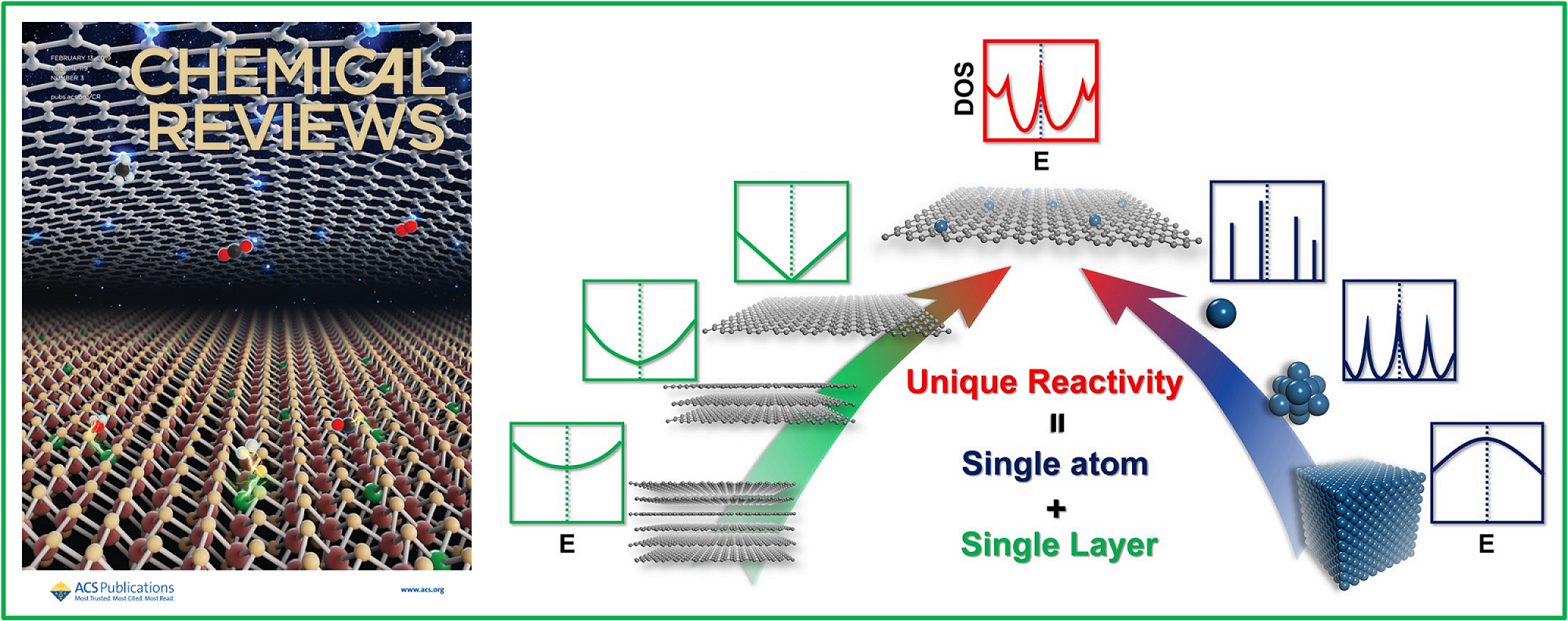An invited review paper “Catalysis with Two-Dimensional Materials Confining Single Atoms: Concept, Design, and Applications” (Chem. Rev. 2019, 3, 1806-1854) was just published and selected as the current cover article by Chemical Reviews, coauthored by Prof. Dehui Deng and Prof. Xinhe Bao, et al. from Dalian Institute of Chemical Physics, CAS.

Catalytic performance is closely related to its geometry and electronic structure. Two-dimensional materials can not only directly act as catalysts due to theirs unique geometric and electronic properties, but also an ideal catalytic support. Single atoms due to its coordination-unsaturated state and tunable electronic structure have recently attracted the attention of researchers in catalysis. In the recent, the Deng and Bao team combines the advantages of two-dimensional materials and single atoms, discovering that two-dimensional materials confining single atoms can form a new electronic state. The confined single atoms can directly act as active sites. Beyond, the confined single atoms can also trigger the surrounding atoms as an active center. The materials exhibit unique catalytic performance in many reaction systems, especially energy small molecular conversion (Chem 2018, 4, 1902; Angew. Chem. Int. Ed. 2018, 57, 16339; Nat. Commun. 2017, 8, 14430; Nano Energy 2017, 32, 353; Nat. Nanotechnol. 2016, 11, 218; Angew. Chem. Int. Ed. 2016, 55, 6708; Sci. Adv. 2015, 1, e1500462; Energy Environ. Sci. 2015, 8, 1594; Chem. Mater. 2011, 23, 1188).
This article systematically reviews the research progress of the research team and international counterparts in the field of two-dimensional materials confining single atoms in the past ten years. It mainly focuses the new electronic states via the integration leading to their mutual benefits in activity. Three typical two-dimensional materials are mainly involved here, i.e., graphene, g-C3N4, and MoS2, and the confined single atoms include both metal and nonmetal atoms. It addresses the unique advantages of the combination of the two in catalysis: 1) Two-dimensional materials confining single atoms with unique electronic properties can enhance the intrinsic activity; 2) The ultra-thin structure and high specific surface area of the two-dimensional materials confining single atoms facilitate the exposure of active center, increasing the number of active sites; 3) The open structure on both sides of the 2D plane enables a quick mass-transfer process, boosting the catalytic reaction rates; 4) The well-defined structure of the 2D materials confining single atoms is an excellent candidate for model study towards the structure-activity relationship at the atomic or molecular level. In addition, the latest developments in thermal, electrical and photocatalytic catalysis of these materials are reviewed, and their future opportunities and challenges in basic catalytic research and industrial applications are fully discussed.
This work is supported by the Ministry of Science and Technology of China, National Natural Science Foundation of China and so on. Meanwhile, this work is dedicated to the 70th anniversary of Dalian Institute of Chemical Physics, CAS. (Text / Image: Jun Mao, Yong Wang, Hehua Gao)
Link:http://www.dicp.ac.cn/xwdt/kyjz/201903/t20190301_5246624.html